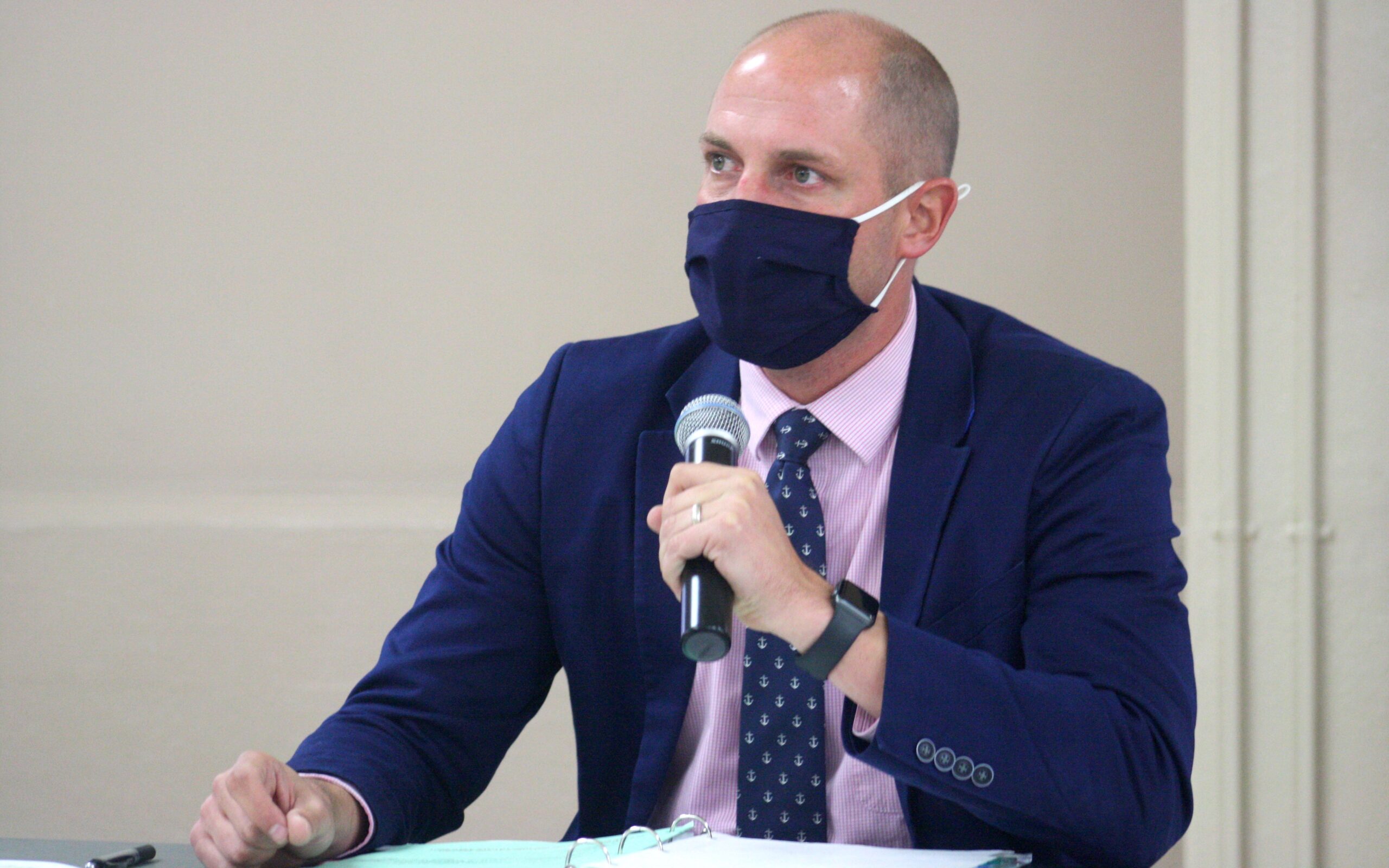
PRESQUE ISLE, Maine — As most of Maine, including Aroostook County, continues to see an increase in COVID-19 cases, SAD 1 superintendent Ben Greenlaw told board and staff members Wednesday that the district is being “hyper vigilant” in trying to prevent and track potential cases in their schools.
During the Nov. 18 school board meeting, Greenlaw said that the individual from Presque Isle High School who recently tested positive for COVID-19 was a student. The student had not been attending classes in person for at least a week prior to the positive test, meaning that there was no potential for exposure at the high school.
Greenlaw said that if there is ever an active case confirmed at any SAD 1 school, the school will immediately go into hybrid or full remote learning mode, depending on how many people are determined to be close contacts of an infected person.
“If the person is someone who’s only at one school, then maybe that involves shutting down one school but keeping the others open,” Greenlaw said.
There has also been a small increase in the percentage of SAD 1 students choosing to learn remotely instead of in a physical classroom. As of Wednesday, 10.5 percent of the student body is learning remotely, compared to 9.5 percent in October.
Greenlaw credits the increase in remote learners to parents’ concerns over the increase in local COVID-19 cases, with most of the remote learners being Presque Isle High School students.
“It’s often much easier for a high school student to transition to remote learning than it is for an elementary student,” Greenlaw said.
During their meeting, SAD 1 board members listened to an update from Barbara Bartlett, principal of Presque Isle Middle School. Bartlett noted the school’s major challenges and successes of the fall semester.
One of the biggest challenges has been adjusting the daily school schedule to allow teachers enough in-person time with their students while keeping in place the necessary social distancing protocols.
“I feel like we had to build the school from the ground up to help our kids transition back to school and keep them safe,” Bartlett said. “Our teachers have tried really hard to mimic, as best they can, the experiences students had before [the pandemic].”
Only 9 percent of PIMS’s student body is taking part in remote learning, meaning that most students are learning in-person at the school every day. Bartlett credited SAD 1’s hiring of a temporary, yearlong school nurse as being helpful for addressing student health concerns during the pandemic.
“When a child isn’t feeling well, they head right down to the nurse’s station,” Bartlett said.
Additional funding for the school nurse and other positions, including education technicians and temporary substitute teachers, have come from CARES – -Coronavirus Aid, Relief and Economic Security Act — funds that SAD 1 has received throughout the pandemic. The district initially received $1.5 million earlier this year and is working to spend another $1.6 million that was provided.
In addition to new student iPads and sanitizing equipment, the district has used the CARES funds to hire full-time substitute teachers for the Mapleton, Pine Street and Zippel elementary schools. Many of those substitute teachers have been able to provide support for students who previously struggled with remote learning, Greenlaw said.
“Many students had fallen behind because of remote learning. The subs have been able to work with those students individually,” Greenlaw said.
Greenlaw also noted that Presque Isle High School currently plans to move forward with winter sports plans, in accordance with recently released guidelines from the Maine Principals Association.
The guidelines allow teams to begin “skills and drills” practices on Dec. 7, with more formal preseason practices and intrasquad scrimmages to begin on Dec. 14. Competitive games are tentatively set to begin Jan. 11, to allow for a break after the holiday travel season in case of COVID-19 spread.
In other news, Greenlaw announced the results of Presque Isle High School’s annual harvest break survey. The survey, conducted every year since 1996, details the percentage of students working harvest-related and non-harvest jobs and those who have not worked. Greenlaw provided board members with statistics dating back to the 2012 harvest break.
According to the survey, 12.9 percent of high school students worked during the 2020 harvest break, a decrease from 16.7 percent in 2019. Meanwhile, the percentage of students who worked non-harvest jobs — 28.6 percent — remained the same. This year 58.5 percent of students did not work at all, compared to 54.7 percent in 2019.
Greenlaw noted that the 12.9 percent of students working harvest is comparable to data from 2016 and 2015, showing that 12 and 12.98 percent of students, respectively, worked harvest in those years.
The highest recent percentage of students working harvest jobs came in 2014, when 26.9 percent of students worked for local farmers.
For the time being, the board does not have plans to discuss the possible future of the harvest break. Although SAD 1 initially voted to eliminate the break in 2018, the board reversed its decision in 2019 following statements from local farmers on the importance of having student workers.
The next SAD 1 board meeting will be held on Wednesday, Dec. 16, in the Presque Isle High School cafeteria.







